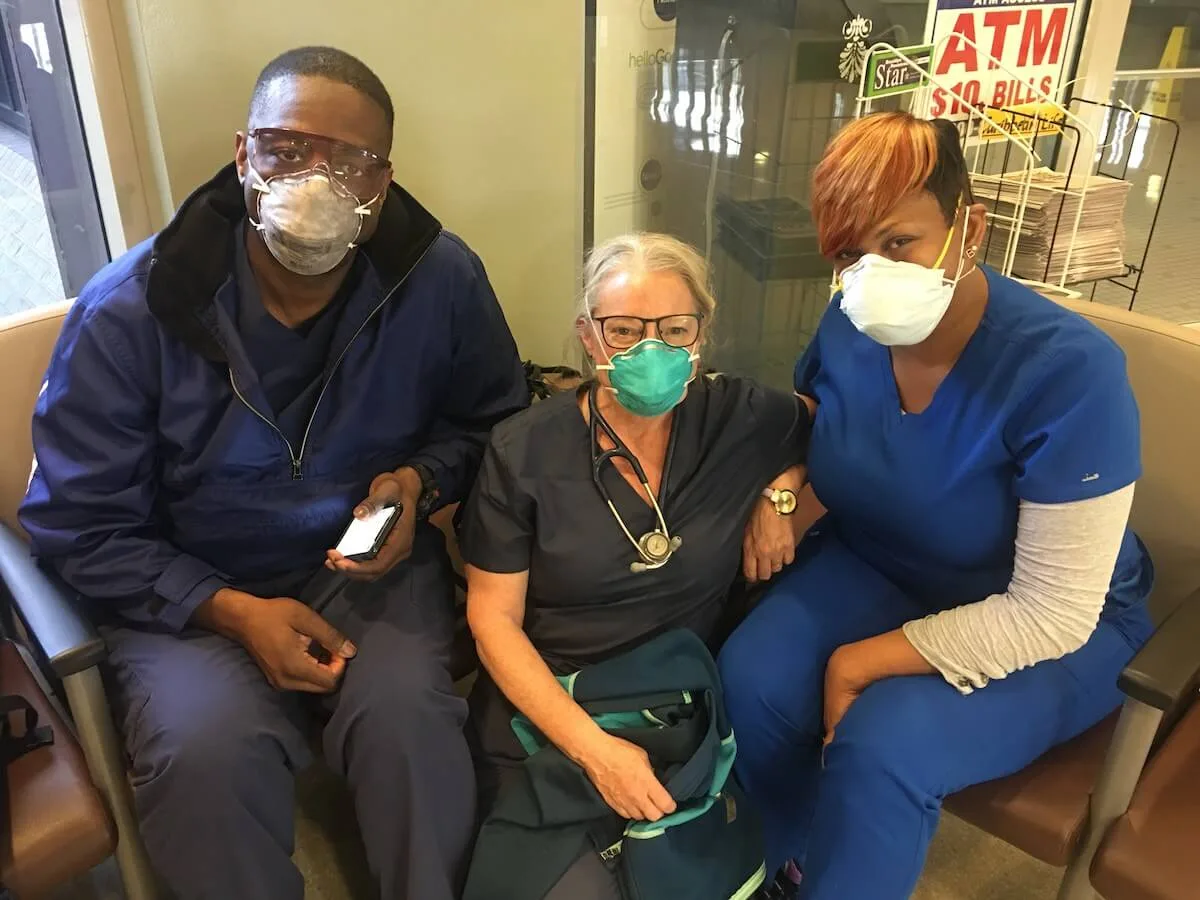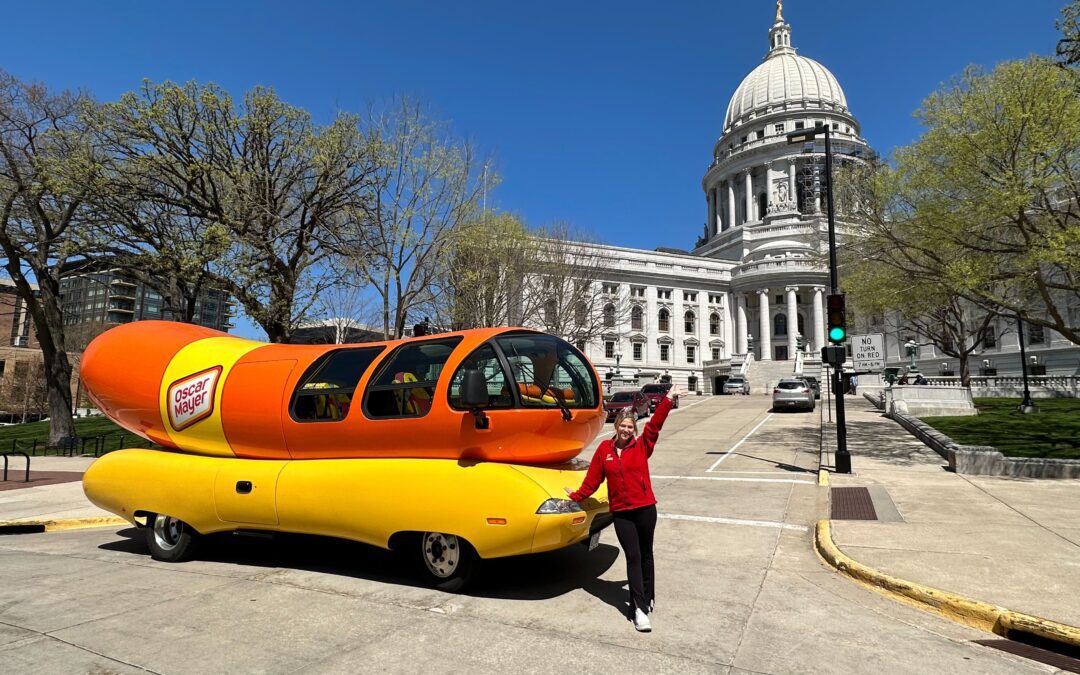
#image_title
Wisconsin nurse describes first day treating COVID-19 patients in New York
Editor’s note: This is the second in an ongoing series of stories profiling Wisconsin resident Elizabeth “Buffy” Riley and her three weeks working as a nurse in New York.
Elizabeth “Buffy” Riley had seen plenty during her nearly three decades working as a nurse, enough to tell story after story of medical maladies.
People sick with illnesses of all sorts. People who had suffered severe injuries. People who died.
But nothing could have prepared her for the scene she encountered on Monday morning, her first day working in an intensive care unit at Woodhull Medical and Mental Health Center in New York.
The room was a whir of continued beeping of different pitches, each sound a symbol of lifesaving mechanisms and multiple medicines necessary to keep those occupying the 10 beds in the room alive. Each bed occupant required a ventilator to keep them breathing, and kidneys of five patients were showing signs of failing too. All patients were pierced by a central line, plastic tubing pumping them full of medications and fluids, and attempt to combat the COVID-19 raging through their bodies
Nurses, many lacking hospital gowns, moved from patient to patient, doing their best to gauge their conditions. They struggled to keep up with the demand of tracking so many medications and situations simultaneously.
It was patients’ faces that were most alarming to Riley. Their complexions had a gray hue, as if they were half dead.
“Oh my God, these patients are in really bad shape,” Riley thought. “They’re really, really sick. How are we going to keep them alive?”
Riley had left Wisconsin on Thursday, bound for New York to use her skills as a registered nurse to care for people hospitalized because of COVID-19. The 62-year-old registered nurse normally works at Cumberland Memorial Hospital in Barron County in northwest Wisconsin. She had decided to leave the relative safety of her small hospital to come to New York to help after seeing media accounts of overwhelmed hospital staff in the city that has become the epicenter of the virus.
Her first few days in the Big Apple had consisted of lots of waiting and little direct action, Riley said. She was among hundreds of nurses who had traveled from across the U.S. to help in hospitals, and coordinating their schedules with those of multiple hospitals was proving to be a tactical challenge.
“So far it’s been a lot of hurry up and wait,” Riley said Sunday evening after another day of not working directly with patients. “All of this waiting is really hard. It makes you even more nervous about what you might be getting into. It would be better if I could just step in and help.”
Riley got her chance on Monday. She and other nurses bound for five different hospitals boarded a bus outside the hotel where they’re staying shortly after 5 a.m. Riley was among 10 nurses dropped off at Woodhull.
As the bus made its way through a strangely silent Manhattan, Riley noted the stark difference between her quiet surroundings and her previous half dozen visits to the city. Three days earlier she had walked past the intersection of 42nd Street and Broadway, a location normally teeming with people and energy day and night. The streets were nearly vacant, home to only a couple of solitary walkers and a homeless man sleeping under blankets, a futile effort to escape the rain.

“This city, I think it’s the greatest city in the world. But now it is so quiet, and so eerie.” Riley said. “It feels like I’m in a ghost town.”
On Monday afternoon the death toll in New York because of the virus was 4,758, nearly half of the 10,217 dead nationally. Hospital workers are overwhelmed by the number of cases they are treating, and many say they lack enough personal protective equipment such as masks and gowns to protect themselves and patients from transmitting the illness.
Riley experienced that firsthand . She and other nurses entering Woodhull Monday morning learned they would each only be issued one N95 mask — the type thought to best protect against transmission of illness — every five days, along with one face shield. In non-COVID-19 times, medical personnel in such situations would use a new mask every time they went from one room to another.
“It’s not ideal,” Riley said matter-of-factly during an interview Monday night while riding the bus back to her hotel. “There aren’t enough PPEs to protect us from the virus. There just aren’t. We’re doing the best we can to protect ourselves and others. But I’m sure we’re exposed to lots of germs. Think about how close we are here, packed onto this bus.”
When Riley arrived at her hotel Monday night, she immediately put her scrubs into a bag and showered, trying her best to ward off the virus. She spent the rest of her night meeting with other nurses, reviewing procedures and learning new ones, all in an effort to try to save the lives of those stricken with COVID-19.
“You have to believe (the COVID-19) patients are going to get better,” she said. “You see how truly sick they are, and you think ‘None of these people are going to survive.’ But they do. People are very resilient.”
Riley is striving to be resilient too. She was emotionally spent Monday night, her head spinning with the life-threatening situations her patients face. She looked forward to getting a few hours sleep before boarding the bus again at 5 a.m. Tuesday, ready to work another 12-hour shift on the front lines, trying to save lives.
After Monday, she was forced to face a new reality for the remainder of her time working as a nurse in New York.
“This is going to be the hardest 17 days of my life,” she said. “But it’s important that I do it.”

New Biden rules deliver automatic cash refunds for canceled flights, ban surprise fees
In the aftermath of a canceled or delayed flight, there’s nothing less appealing than spending hours on the phone waiting to speak with an airline...

One year on the Wienermobile: The life of a Wisconsin hotdogger
20,000+ miles. 16 states. 40+ cities. 12 months. Hotdogger Samantha Benish has been hard at work since graduating from the University of...

Biden makes 4 million more workers eligible for overtime pay
The Biden administration announced a new rule Tuesday to expand overtime pay for around 4 million lower-paid salaried employees nationwide. The...

‘Radical’ Republican proposals threaten bipartisan farm bill, USDA Secretary says
In an appearance before the North American Agricultural Journalists last week, United States Department of Agriculture (USDA) Secretary Tom Vilsack...




